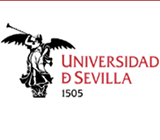Detailed introduction of the University of Seville:
Introduction and Overview
Geographical location: Located in Seville, the capital of the Andalusian Autonomous Region of Spain, the campus is spread throughout the city of Seville.
Student size: With more than 75,000 students, it is the second largest university in Spain and the largest university in Andalusia.
History and founding time
The history of the University of Seville can be traced back to the mid-13th century, when the Dominicans organized schools to teach Arabic, Hebrew and Greek in order to train missionaries to preach to the Moors and Jews. In 1254, Alfonso X established the "General School" of Arabic and Latin in Seville. In 1260, Alexander IV recognized it as a "center of general literary research." In 1472, Archbishop Rodrigo Fernández de Santaela began to build university buildings; in 1502, the Catholic monarchs issued a royal decree to establish the university; in 1505, Pope Julio II granted the authorization bull. In 1516, students began to study at the "College of Jesus and Our Lady of Mary". In 1551, the city committee approved a comprehensive college and the university was officially established.
School Strength
Teaching Quality: As one of the largest and oldest institutions of higher learning in southern Spain, it offers degree courses in 65 different disciplines and has a wide range of academic and sports facilities, providing students with rich learning resources and diverse choices.
Faculty: The school has a strong lineup of professors and lecturers. They have high professional qualities and teaching levels, and can provide students with high-quality teaching and guidance, which provides a strong guarantee for the school's teaching quality and academic research.
Scientific Research Strength: It is one of the leading research institutions in Spain and has made important contributions to scientific and technological research. Its scientific research results have not only promoted the overall development of science, but also enriched and developed the culture of Seville and even the entire Andalusia region.
Institutional Nature
Public University.
Educational Philosophy
The University of Seville adheres to "equality, freedom, justice and diversity" 's educational philosophy, focusing on cultivating students' independent learning ability and innovative spirit, and encouraging students to explore and practice in multiple fields such as academic, cultural and social fields to achieve personal all-round development and enhance social value.
Key laboratories and disciplines
Key disciplines: The school's archaeology major performed well in the QS rankings, ranking 101-150 in the world. In addition, disciplines such as medicine, law, economics, and linguistics also have a high level of teaching and research, and enjoy a certain reputation in Spain and internationally.
Key laboratories: The school has a number of advanced scientific research laboratories and research centers, such as the Institute of Biomedicine, the Institute of Materials Science, the Information Technology Research Center, etc., which provide strong support for scientific research and teaching in related fields.
Department Settings
The University of Seville has 17 departments, including the Department of Fine Arts, the Department of Biology, the Department of Educational Sciences, the Department of Work Sciences, the Department of Economics and Business Sciences, the Department of Communication, the Department of Law, the Department of Pharmacy, the Department of Linguistics, the Department of Philosophy, the Department of Physics, the Department of Geography and History, the Department of Mathematics, the Department of Medicine, the Department of Dentistry, the Department of Psychology, and the Department of Chemistry. In addition, other departments are distributed in various areas of Seville, such as the Faculty of Arts and the Faculty of Geography and History in Rectorado, the Faculty of Health Sciences in Lamacarena, the Business School in Nervion, the Faculty of Engineering and the Faculty of Communication in Lacartuja, and the Faculty of Science in Reinamercedes.
Ranking
QS World University Rankings 2025: Ranked 462nd.
ARWU World Rankings 2019: 401-500.
CWTS World Rankings 2019: 297.
QS World Rankings 2020: 601-650.
THE World Rankings 2020 World ranking: 801-1000.
2020 USNWR global ranking: 522.
Expenses
Tuition fees: Tuition fees at Spanish public universities are relatively low, and undergraduate and master's programs are generally around 1000-2000 euros per year. The specific tuition fees may vary depending on the major and degree type.
Living expenses: Living expenses including accommodation, food, transportation, etc. are about 800-1000 euros per month. Of course, this will also vary depending on personal lifestyle and consumption habits.
Campus environment
Campus distribution: The campuses are widely distributed and integrated with the urban landscape of Seville. Some of the buildings have important historical and cultural values. For example, the principal's building on the main campus is the original Spanish Royal Tobacco Factory built in the 18th century. It was the largest industrial building in Europe at the time and a famous historical and cultural heritage of Spain.
Teaching facilities: The school has modern teaching facilities, including libraries, laboratories, teaching buildings, gymnasiums, etc., which provide convenience for students' study and life. Its library has a rich collection of 1,507,097 books, making it the third largest university library in Spain, second only to the Complutense University Library in Madrid and the University Library in Barcelona.
Cultural and artistic atmosphere: A strong humanistic atmosphere is a major feature of the University of Seville. Various cultural activities, academic lectures and art exhibitions are often held on campus, providing students with a broad cultural exchange platform, so that students can feel the strong cultural and artistic atmosphere while learning professional knowledge, broaden their horizons and improve their comprehensive quality.
-
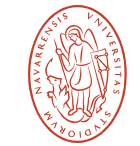
University of Navarra
-
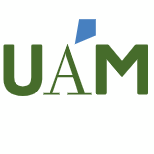
Autonomous University of Madrid
-

Polytechnic University of Catalonia
-

CEU University of San Pablo
-
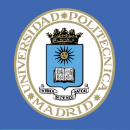
Technical University of Madrid
-

University of Lleida
-
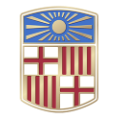
University of Barcelona
-
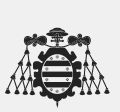
University of Oviedo
-
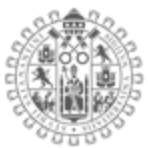
University of Salamanca
-
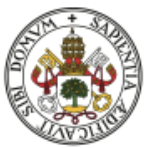
University of Valladolid
-

Mesoamerican University
-

Istmo University
-

Mariano Galvez University of Guatemala
-

Regional University of Guatemala
-

Galileo University
-

Francisco Marroquín University
-

Rafael Landívar University
-

University of the Valley of Guatemala
-

University of San Carlos of Guatemala
-

Technological Institute of Tlaxcala Plateau
-

Golfo University
-

Technological University of South Sonora
-

Technological University of Huejotzingo
-

Tizimín Institute of Technology
-

Chilpancingo Institute of Technology

